
Oracle Fusion SCM Training provides a comprehensive understanding of modern supply chain management using Oracle’s cloud-based solution. This course covers inventory optimization, procurement strategies, order management, logistics, and demand planning, leveraging AI, automation, and real-time analytics. Learn to streamline operations, enhance supplier collaboration, and improve fulfillment efficiency. Gain hands-on expertise in supply chain execution and planning to drive business success in a digital-first environment.
Oracle Fusion SCM Training Interview Questions Answers - For Intermediate
1. How does Oracle Fusion SCM ensure supply chain resiliency?
Oracle Fusion SCM enhances supply chain resiliency through real-time visibility, AI-driven risk detection, and predictive analytics. It allows businesses to proactively address supply chain disruptions, identify alternative suppliers, and optimize logistics routes to minimize operational delays and risks.
2. What are the key benefits of Oracle Product Lifecycle Management (PLM)?
Oracle PLM streamlines product development, change management, and compliance tracking. It enables collaboration among cross-functional teams, reduces time-to-market, and ensures regulatory compliance by providing a centralized platform for managing product data, revisions, and approvals.
3. How does Oracle Fusion SCM support drop shipping?
Oracle Fusion SCM facilitates drop shipping by integrating suppliers directly into the order fulfillment process. When a drop-ship order is placed, the system automatically notifies the supplier, tracks the shipment, and updates the order status, reducing inventory holding costs while ensuring timely deliveries.
4. What are predefined seeded roles in Oracle Fusion SCM?
Seeded roles in Oracle Fusion SCM include roles like Inventory Manager, Procurement Buyer, Order Management Specialist, Warehouse Manager, and Supply Chain Analyst. These predefined roles ensure proper access control and segregation of duties within the supply chain operations.
5. How does Oracle Fusion SCM manage supplier collaboration?
Fusion SCM enables supplier collaboration through the Supplier Portal, which allows suppliers to access purchase orders, submit invoices, track payments, and manage compliance requirements. It enhances transparency and efficiency in supplier relationships, reducing manual communication errors.
6. What is the difference between Standard and Back-to-Back Order Fulfillment in Oracle Fusion SCM?
A Standard Order is fulfilled from available inventory, while a Back-to-Back Order involves sourcing inventory on demand, ensuring that the requested product is procured or manufactured as per customer requirements before shipping.
7. How does Oracle Fusion SCM support Lean Manufacturing?
Fusion SCM incorporates Lean Manufacturing principles by reducing waste, optimizing inventory, and streamlining production processes. Features like Just-in-Time (JIT) inventory, demand-driven replenishment, and automated work order execution help businesses minimize excess stock and production inefficiencies.
8. What is the purpose of the Procurement Contracts module in Oracle Fusion SCM?
The Procurement Contracts module helps businesses create, manage, and enforce supplier agreements. It includes contract authoring, approval workflows, renewal tracking, and compliance monitoring, ensuring that procurement activities align with legal and business policies.
9. How does Oracle Fusion SCM support warehouse automation?
Fusion SCM integrates with Warehouse Management Systems (WMS) to enable automated picking, packing, and shipping processes. It supports barcode scanning, RFID tracking, and robotic process automation (RPA) to improve warehouse accuracy, reduce human errors, and enhance operational efficiency.
10. What is Cost Accounting in Oracle Fusion SCM?
Cost Accounting in Oracle Fusion SCM helps businesses track and analyze supply chain costs, including procurement, manufacturing, and logistics expenses. It provides real-time cost insights, variance analysis, and profitability assessments to support better financial decision-making.
11. What is the role of Approval Workflows in Oracle Fusion SCM?
Approval Workflows automate the review and authorization of supply chain transactions, such as purchase orders, requisitions, and supplier contracts. These workflows ensure compliance with business policies, reduce delays, and enhance accountability in decision-making.
12. How does Oracle Fusion SCM manage multi-currency transactions?
Fusion SCM supports multi-currency transactions, allowing businesses to manage international trade, supplier payments, and customer invoicing in different currencies. The system automatically converts and adjusts currency values based on real-time exchange rates.
13. What is the purpose of Transfer Orders in Oracle Fusion SCM?
Transfer Orders facilitate the movement of inventory between different warehouse locations or business units. Unlike direct shipments, Transfer Orders track stock movement, update inventory levels in real time, and ensure better control over internal logistics.
14. How does Oracle Fusion SCM handle demand prioritization?
Fusion SCM uses AI-based demand planning to prioritize customer orders based on factors like order value, delivery deadlines, and available inventory. The system automatically allocates resources to high-priority orders, ensuring efficient fulfillment and customer satisfaction.
15. What are the key advantages of Oracle Fusion SCM over legacy ERP systems?
Oracle Fusion SCM offers cloud scalability, real-time analytics, AI-driven automation, enhanced security, and seamless integration with modern applications. Unlike legacy ERP systems, it provides continuous updates, mobile accessibility, and reduced infrastructure costs, making it a more agile and future-proof solution.
Oracle Fusion SCM Training Interview Questions Answers - For Advanced
1. How does Oracle Fusion SCM enhance supply chain efficiency through digital twins?
Oracle Fusion SCM leverages digital twin technology to create a virtual representation of physical supply chain assets, such as warehouses, transportation networks, and production facilities. This allows businesses to simulate different supply chain scenarios, optimize resource utilization, and predict potential disruptions before they occur. By integrating real-time data from IoT sensors, AI, and machine learning, digital twins provide actionable insights that help businesses improve production planning, reduce downtime, and enhance demand forecasting accuracy.
2. What is the difference between back-to-back ordering and drop shipping in Oracle Fusion SCM?
Back-to-back ordering is a process where an order is placed with a supplier or manufacturer only when a customer order is received. The system automatically generates a purchase requisition or work order, ensuring that inventory is procured or manufactured based on actual demand rather than forecasts. In contrast, drop shipping allows suppliers to ship goods directly to customers, bypassing the seller's inventory. This reduces warehousing costs but requires strong coordination between suppliers and order management processes. Oracle Fusion SCM supports both methods through automated workflows and integration with suppliers.
3. How does Oracle Fusion SCM support sustainability and environmental compliance?
Oracle Fusion SCM helps businesses meet sustainability goals by optimizing logistics routes, reducing carbon emissions, and promoting eco-friendly sourcing. The Sustainable Supply Chain module integrates with carbon footprint tracking systems, enabling companies to assess the environmental impact of their supply chain activities. It also ensures compliance with environmental regulations such as REACH, RoHS, and ISO 14001, providing automated audit trails, waste reduction insights, and supplier sustainability scoring.
4. What are Oracle Fusion SCM’s capabilities for multi-echelon inventory optimization?
Multi-echelon inventory optimization (MEIO) is a technique used in Oracle Fusion Inventory Management Cloud to optimize stock levels across multiple locations, including warehouses, distribution centers, and retail stores. The system analyzes historical sales data, demand variability, and supplier lead times to dynamically adjust inventory levels. Unlike traditional single-echelon models, MEIO balances inventory across the entire supply chain network, ensuring that stock is available where and when it is needed while minimizing excess inventory costs.
5. How does Oracle Fusion SCM handle exception-based supply chain management?
Exception-based supply chain management in Oracle Fusion SCM uses AI-driven alerts and automated workflows to address issues such as delayed shipments, stockouts, order inaccuracies, and production bottlenecks. The Supply Chain Command Center continuously monitors real-time supply chain data, triggering exception notifications when deviations occur. The system suggests corrective actions, such as rerouting shipments, expediting orders, or reallocating inventory, allowing businesses to react quickly and mitigate risks proactively.
6. What is the role of constraint-based supply chain planning in Oracle Fusion SCM?
Constraint-based planning ensures that manufacturing and logistics operations are optimized by considering resource limitations, such as machine capacity, labor availability, and material constraints. Oracle Supply Chain Planning Cloud evaluates multiple planning scenarios, applying heuristic algorithms and optimization techniques to find the most efficient production and distribution plans. This method helps businesses maximize throughput, reduce bottlenecks, and meet customer delivery commitments with minimal disruptions.
7. How does Oracle Fusion SCM ensure accurate landed cost calculations?
Landed cost in Oracle Fusion SCM refers to the total cost of a product upon arrival at its final destination, including purchase price, transportation, duties, taxes, and handling fees. The Oracle Cost Management Cloud module automatically calculates landed costs based on real-time supplier invoices, freight tracking, and customs fees, ensuring accurate cost allocation. Businesses can use this data to optimize supplier selection, negotiate better shipping rates, and make informed pricing decisions.
8. What is the significance of ATP (Available-to-Promise) and CTP (Capable-to-Promise) in Oracle Fusion SCM?
Available-to-Promise (ATP) determines whether an order can be fulfilled based on current inventory levels and expected replenishments, while Capable-to-Promise (CTP) assesses whether manufacturing resources can fulfill an order within a given timeframe. ATP is typically used for standard stock items, while CTP is used for customized or made-to-order products. The Global Order Promising (GOP) module in Oracle Fusion SCM enables businesses to analyze fulfillment options dynamically, ensuring better delivery commitments and resource utilization.
9. How does Oracle Fusion SCM handle reverse logistics and returns management?
Oracle Fusion SCM provides a structured Returns Management module that automates customer returns, supplier returns, and warranty claims. Businesses can define return policies, track returned items, and process refunds or replacements efficiently. The system supports RMA (Return Material Authorization) workflows, ensuring that returned goods are properly inspected, restocked, repaired, or discarded. Additionally, analytics tools provide insights into return trends, helping businesses improve product quality and reduce return rates.
10. What are dynamic lead times in Oracle Fusion SCM, and how do they improve supply chain planning?
Dynamic lead times adjust supplier, production, and transportation lead times based on real-time performance metrics, market conditions, and historical data. Unlike static lead times, which assume fixed durations, dynamic lead times adapt to seasonal fluctuations, supplier reliability, and logistics disruptions. Oracle Fusion SCM integrates with machine learning algorithms to continually refine lead-time predictions, ensuring more accurate production schedules and reduced delays.
11. How does Oracle Fusion SCM improve supplier risk assessment and mitigation?
Oracle Fusion SCM incorporates supplier risk management tools to analyze supplier performance, financial stability, compliance records, and geopolitical risks. The Supplier Qualification Management (SQM) module assigns risk scores based on historical performance, on-time delivery rates, and regulatory compliance audits. Businesses can use these insights to diversify their supplier base, negotiate better contracts, and implement proactive risk mitigation strategies.
12. How does Oracle Fusion SCM enable AI-driven supply chain anomaly detection?
Oracle Fusion SCM leverages machine learning algorithms and AI-based analytics to detect supply chain anomalies such as unexpected demand spikes, fraudulent transactions, and unusual supplier behavior. The system continuously monitors order patterns, inventory movements, and procurement activities, flagging any deviations from normal behavior. Businesses can set up automated alerts and corrective action workflows, reducing the impact of supply chain disruptions.
13. What is the role of demand shaping in Oracle Fusion SCM?
Demand shaping involves influencing customer demand through pricing adjustments, promotions, product substitutions, and targeted marketing strategies. Oracle Demand Management Cloud provides AI-powered demand sensing tools that analyze market trends, competitor pricing, and seasonal effects to recommend optimal pricing and promotional strategies. This approach helps businesses align supply chain operations with expected demand, minimizing stock imbalances and improving sales performance.
14. How does Oracle Fusion SCM optimize warehouse operations through automation?
Oracle Warehouse Management Cloud (WMS) integrates with robotic process automation (RPA), AI-driven picking algorithms, and RFID tracking to enhance warehouse efficiency. The system enables automated inventory tracking, optimized space utilization, and real-time labor management. Advanced features like voice-assisted picking, automated conveyor sorting, and drone-based inventory audits further improve warehouse productivity while reducing human error.
15. What is the impact of real-time IoT sensor integration on Oracle Fusion SCM?
IoT sensor integration in Oracle Fusion SCM provides real-time tracking of shipments, equipment health monitoring, and predictive maintenance insights. IoT-enabled warehouse sensors detect environmental conditions such as temperature and humidity, ensuring compliance with storage requirements for perishable goods. In manufacturing, IoT-driven predictive maintenance reduces downtime by identifying equipment issues before they lead to failures. The system’s integration with AI-driven analytics enhances decision-making, improves asset utilization, and ensures seamless supply chain execution.
Course Schedule
| Apr, 2025 | Weekdays | Mon-Fri | Enquire Now |
| Weekend | Sat-Sun | Enquire Now | |
| May, 2025 | Weekdays | Mon-Fri | Enquire Now |
| Weekend | Sat-Sun | Enquire Now |
Related Courses
Related Articles
Related Interview
- DevOps & GitHub Foundations (AZ-2008) Core Principles Training Interview Questions Answers
- Salesforce Consumer Goods Cloud Training Interview Questions Answers
- Snowflake Data Engineer Interview Questions and Answers
- Cloud Architect Professional Training Interview Questions Answers
- Data Science with Python Interview Questions Answers
Related FAQ's
- Instructor-led Live Online Interactive Training
- Project Based Customized Learning
- Fast Track Training Program
- Self-paced learning
- In one-on-one training, you have the flexibility to choose the days, timings, and duration according to your preferences.
- We create a personalized training calendar based on your chosen schedule.
- Complete Live Online Interactive Training of the Course
- After Training Recorded Videos
- Session-wise Learning Material and notes for lifetime
- Practical & Assignments exercises
- Global Course Completion Certificate
- 24x7 after Training Support





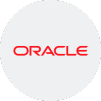
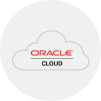
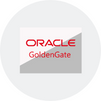
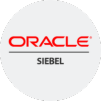
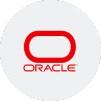


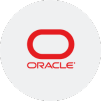

 Join our Live Instructor-Led online classes delivered by industry experts
Join our Live Instructor-Led online classes delivered by industry experts